Sanjay Gandhi National Park or Borivali National Park, as its popularly known, lies in northern suburb of Borivali, Mumbai. It is 104 km2 (40 sq mi) of forest surrounded by the traffic, noise and the chaos of one of the most populated cities in India.
It is remarkable that such a large national park exists INSIDE a city! It has a vast population of flora and fauna; some rare butterflies, deer and even 22 leopards! It is a designated UNESCO heritage site; in part because of the Kanheri Caves built here around 2400 years ago! The park is home of two lakes, Vihar and Tulsi – these provide drinking water to the people of Mumbai.
104 km2 is just a figure. What’s in a number right? I’m not sure I understand a number like that… so I searched for reference points.
— Another park in a city: Central Park in New York is a mere 3.41 km²
— The famous Ranthambore is just 3 times larger at 392 km²!
Borivali National Park is aptly called the ‘lungs of Mumbai’ but, it’s a place most locals like me forget about. We travel far away from Mumbai searching for nature, culture, history without realising it is all enclosed within this national park.
The Shilonda Trail has been eluding me for the last two years. It is a trail that comes alive during the monsoon season, given the range of flora and fauna one can observe. It is a walk – not really a trek that ends overlooking a beautiful, slow moving river.
Finally, last Saturday, we stepped into our shoes, grabbed the umbrellas and raincoats, stocked up on drinking water and went for a walk in this national park. As expected we made a beeline for the Shilonda trail.
Was I disappointed? No, on the contrary, I was most happy. It was a simple walk; the jungle always surprises me – this forest surprised me too with its’ beautiful trees, a great guide who told us tonnes of stories, lovely company and a meandering and peaceful walk to the stream.
- cup and saucer flowers
- beautiful wild mushrooms
- the flowers of a turmeric plant
I learned about hornbills and their marvelous parenting techniques
I learned about how to conduct a census for leopards – this census is conducted every year in May and they NEED volunteers (how cool is that!)
I saw a HUGE hooded grasshopper, renamed it in my head to “leafhopper”.
I jumped away and was bypassed by scurrying ground crabs.
I searched amongst half eaten leaves for the larvae of the world’s largest moth.
And in the midst of this, heard the ‘brain fever’ bird call out ‘brain fever’ – eerily its call echoed the sound of those words nearly spot on!
Walked in squishy-squashy mud and watched bubbles rise to the surface… this area has bubbles every monsoon and no one has determined out why… it reminded us of Budbudi Ttali from Goa!
And finally, I learned about how some imported plants are used to turn arid soil into fertile soil, so that local trees can grow.
- the plant that makes soil fertile
- hooded grasshopper
- ground crab
- the stream by the tree
- the machan – leopard watching
- the trail
I walked through the buffer zone and entered the reserved forest and finished my walk by sitting by the river on tree trunks, roots and rocks with discussion about how to teach children to respect and value the environment. Being in nature brings out these simple yet profound ideas.
This was a lovely way to spend a Saturday morning!
Walk completed, I walked out of the park to loud sounds and the craziness that characterizes Mumbai roads! This cacophony of horns and engine noise almost assaulted my senses, but made me also wonder and cherish the beauty that was so accessible to me.
I am coming back…park, this Saturday in fact – to climb to the top of Kanheri caves… see you again!
And to all of you out there, who have delayed the visit like me… if you live in Bombay and have been postponing that trip to the Borivali National Park. DON’T! Just go this weekend, its beautiful, vast and in your backyard!


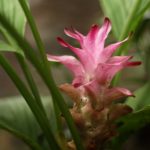
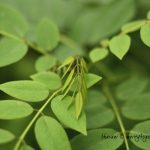

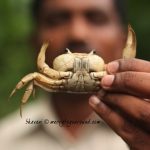
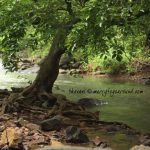
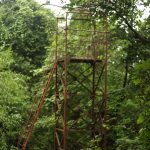
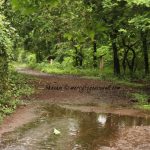
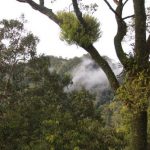


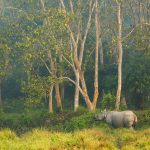
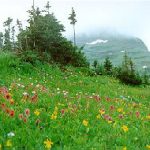
This is in Mumbai? Wow! Great photos too 🙂